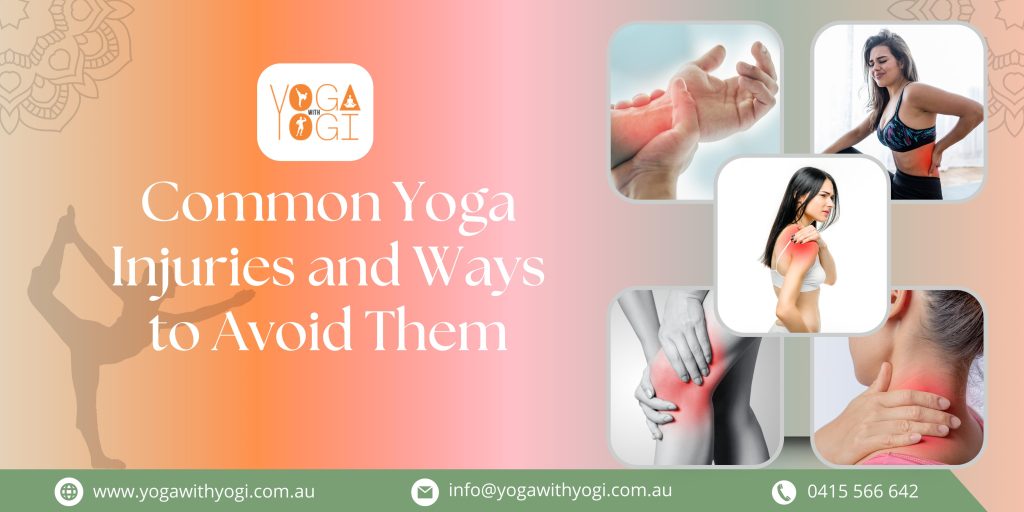Yoga has been in the world for hundreds of years but has become extremely popular these days as people have started to realize its health benefits. Online yoga classes Australia have transformed people and given them a healthier life. Yoga is one of the best ways to improve health and lifestyle but can cause injuries as well if not done properly. There are several possible causes for injuries sustained during yoga practice. Some people may get cramps in any muscle group in their body without warning, while others may unintentionally sprain a joint—typically the ankle, wrist, or neck.
We will discuss common yoga injuries in this article and ways to avoid them.
Wrist injury
Incorrect alignment during weight-bearing positions like the plank and downward dog can frequently lead to this injury. Make sure your weight is evenly distributed across both hands, spread and flex your fingers, and apply pressure on your knuckles to release tension in your wrists. Utilizing targeted workouts, concentrate on forearm and wrist strengthening as well. Therefore, schedule ten minutes extra before your yoga session to complete these wrist strengthening exercises if you frequently have wrist discomfort or have difficulty bearing weight on your wrist.
Injury of lower back
Incorrect posture, overstretching during deep forward bends, and workouts like double leg raises that heavily strain the lower back can all contribute to lower back pain. While practicing yoga, you must always keep your spines neutral—that is, your tailbone should be tucked into your bodies to prevent the lower back from overarching—and remember to use your core muscles for support.
It’s good to keep in mind that leaning forward too far can strain one’s lower back. Instead, one should slightly bend one’s knees to lessen the strain and pressure on the back. Rather than pushing oneself above one’s comfort zone, one should aim to progressively improve strength and flexibility via consistent practice.
Shoulder Injury
Rotator cuff injuries can result from overextending or compressing the shoulders in different positions. We must consciously press our shoulders down and keep them away from our ears in order to prevent this. We should adjust our posture and try the position to the best of our abilities because if the shoulders get weak, the back starts to stoop. Our shoulder muscles need to be strengthened, and we must always maintain good alignment. To help us into the posture while protecting the shoulder joint, we must utilize props like straps and blocks.
Knee injury
Injuries can result by twisting the knee when attempting to push it in different awkward postures from applying too much pressure in standing poses. Avoid overbending your knee when standing to prevent injuries and pain. When bending the knee in a standing position, the knee should stay bent over the ankle and not past it. Instead of the knees bearing the brunt of the weight, the leg muscles, foot, and hips support the weight in this position. Also, if one’s flexibility is inadequate, steer clear of deep knee bends. When in seated positions, use blocks or blankets for support.
Neck injury
The Plough and the Shoulder Stand are two poses that force the chin into the chest and overstretch the neck muscles. Instructors in online yoga classes always ask to avoid these poses if one has cervical spondylosis or other neck conditions. Maintain proper head alignment at all times, pulling the chin back toward the chest to keep the rear of the head in line with the back, to avoid neck strains. The thin neck will strain if the heavy head slips forward.





